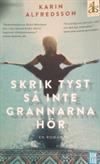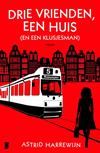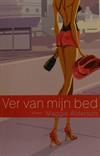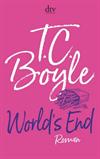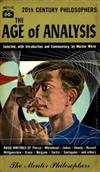
The Four Immigrants Manga : A Japanese Experience in San Francisco, 1904-1924
by Henry (Yoshitaka) Kiyama, Frederik L. Schodt | Graphic Novels |
ISBN: 1880656337 Global Overview for this book
ISBN: 1880656337 Global Overview for this book
1 journaler for this copy...
Rec'd via Bookmooch.com.
Looks like this is a former textbook.
--
From Library Journal
These poignant tales of four immigrants in turn-of-the-century San Francisco try for irony in depicting the protagonists' attempts to understand the convoluted whims of their American employers. But the humor hovers near slapstick, and the pie is always in the face of the Caucasians. The illustrations are direct and effective; we see how hard it is for Japanese immigrants to reach the top shelf of an American cupboard. The story is bookended by the dates 1904 and 1924, as in 1924 the immigration laws stiffened and some of the protagonists elected to return to Japan. After 18 years of preparation, this book includes extensive notes historically pinpointing several of the cartoons and an introduction providing an overview of the author/illustrator. Though not quite the first "graphic novel" ever, as it is being touted, this book does have historical significance and belongs in libraries specializing in comics, cartoons, and graphic novels, as well as those focusing on California history, immigrant studies, and the Japanese American experience.?Stephen Weiner, Maynard P.L., MA
Copyright 1998 Reed Business Information, Inc.
Looks like this is a former textbook.
--
From Library Journal
These poignant tales of four immigrants in turn-of-the-century San Francisco try for irony in depicting the protagonists' attempts to understand the convoluted whims of their American employers. But the humor hovers near slapstick, and the pie is always in the face of the Caucasians. The illustrations are direct and effective; we see how hard it is for Japanese immigrants to reach the top shelf of an American cupboard. The story is bookended by the dates 1904 and 1924, as in 1924 the immigration laws stiffened and some of the protagonists elected to return to Japan. After 18 years of preparation, this book includes extensive notes historically pinpointing several of the cartoons and an introduction providing an overview of the author/illustrator. Though not quite the first "graphic novel" ever, as it is being touted, this book does have historical significance and belongs in libraries specializing in comics, cartoons, and graphic novels, as well as those focusing on California history, immigrant studies, and the Japanese American experience.?Stephen Weiner, Maynard P.L., MA
Copyright 1998 Reed Business Information, Inc.
The Four Immigrants Manga is a must-read for fans of manga (Japanese comics) for it is an excellent early example of a Japanese artist taking an art style popular at the time (American newspaper comic strips) and adapting it to tell his own, uniquely Japanese-American stories. Yoshitaka Kiyama was a Japanese student who came to San Francisco in the early 20th century, re-named himself Henry, and set about studying Western art techniques. While technically proficient, Henry never broke into new territory with his painting. He experienced mild success back home in Japan, but for years was completely unknown on the other side of the Pacific.
He did, however, create a semi-autobiographical collection of comic strips chronicling the lives of four friends, and these strips provide a compelling history of the first wave of Japanese immigrants, a group usually forgotten in American history. (Indeed, most American History textbooks neglect to mention the Japanese-Americans who lived here until they’re shuttled off to concentration camps during the Second World War.) The strips were written in both Japanese and English, and Frederik L. Schodt’s translation successfully conveys the unique bilingual approach. As the four immigrants – Fred, Henry, Frank and Charlie – begin their lives in America, each has a different goal. Henry is quiet and hides in the background, studying and painting as much as he can. Fred wants to become a successful farmer in the fertile Sacramento Valley. He soon leaves San Francisco to work in the rice fields. This leaves the strip to Frank and Charlie, and they shine as the stars. Each wants to get rich quick, have fun enjoying the freedom of America, and find a pretty Japanese girl. Whether working as houseboys for wealthy San Francisco socialites or picking fruit in the capitol city, they never seem to get ahead. Whenever they get a little money saved, their investment tanks, the bank fails, or they fritter it away gambling. Discrimination is a constant factor, too; Charlie fights in World War I to gain citizenship, only to find out after he returns from the front that it isn’t available to Orientals.
If you’re politically correct, please don’t touch this book. It will only make you angry. Discrimination was a fact of life in Kiyama’s day, on both sides. Americans/Whites look down on other races as inferior, and often treat them worse than dogs. The Japanese believe themselves to be superior – often they were better educated than the people they worked for - and refer to others in derogatory terms. Kiyama’s depiction of the Chinese (slanty-eyed, pigtailed) and African-Americans (thick lipped and pure black ink) he encounters follow the standard caricatures that most cartoonists used. But you have to remember the world Kiyama was writing in. Politically the Japanese and Chinese were often losing ground. Laws like the Alien Land Act took the legal rights of Japanese landowners away, and if they didn’t have American-born children to pass the ownership to they were screwed, and every year it got harder and harder to immigrate to the US. Who wouldn’t be a little bitter?
It’s a fascinating book, especially useful for refuting those who might say that immigrants don’t assimilate or adapt American ways. Kiyama spent much of his later life traveling back and forth across the Pacific, and though he and his friends remain stoutly Japanese, they are also undeniably American.
He did, however, create a semi-autobiographical collection of comic strips chronicling the lives of four friends, and these strips provide a compelling history of the first wave of Japanese immigrants, a group usually forgotten in American history. (Indeed, most American History textbooks neglect to mention the Japanese-Americans who lived here until they’re shuttled off to concentration camps during the Second World War.) The strips were written in both Japanese and English, and Frederik L. Schodt’s translation successfully conveys the unique bilingual approach. As the four immigrants – Fred, Henry, Frank and Charlie – begin their lives in America, each has a different goal. Henry is quiet and hides in the background, studying and painting as much as he can. Fred wants to become a successful farmer in the fertile Sacramento Valley. He soon leaves San Francisco to work in the rice fields. This leaves the strip to Frank and Charlie, and they shine as the stars. Each wants to get rich quick, have fun enjoying the freedom of America, and find a pretty Japanese girl. Whether working as houseboys for wealthy San Francisco socialites or picking fruit in the capitol city, they never seem to get ahead. Whenever they get a little money saved, their investment tanks, the bank fails, or they fritter it away gambling. Discrimination is a constant factor, too; Charlie fights in World War I to gain citizenship, only to find out after he returns from the front that it isn’t available to Orientals.
If you’re politically correct, please don’t touch this book. It will only make you angry. Discrimination was a fact of life in Kiyama’s day, on both sides. Americans/Whites look down on other races as inferior, and often treat them worse than dogs. The Japanese believe themselves to be superior – often they were better educated than the people they worked for - and refer to others in derogatory terms. Kiyama’s depiction of the Chinese (slanty-eyed, pigtailed) and African-Americans (thick lipped and pure black ink) he encounters follow the standard caricatures that most cartoonists used. But you have to remember the world Kiyama was writing in. Politically the Japanese and Chinese were often losing ground. Laws like the Alien Land Act took the legal rights of Japanese landowners away, and if they didn’t have American-born children to pass the ownership to they were screwed, and every year it got harder and harder to immigrate to the US. Who wouldn’t be a little bitter?
It’s a fascinating book, especially useful for refuting those who might say that immigrants don’t assimilate or adapt American ways. Kiyama spent much of his later life traveling back and forth across the Pacific, and though he and his friends remain stoutly Japanese, they are also undeniably American.
Read last night.
A musical based on Kiyama's comics is currently being performed here in the Bay Area. Here's a link to a review in the San Jose Mercury News. My family has tickets to see the show this upcoming Saturday, so I wanted to re-read the comics before we went.
A musical based on Kiyama's comics is currently being performed here in the Bay Area. Here's a link to a review in the San Jose Mercury News. My family has tickets to see the show this upcoming Saturday, so I wanted to re-read the comics before we went.
I loaned this to my parents after we saw the Four Immigrants musical last weekend.
The show was pretty good. It uses a vaudeville style of storytelling that leans heavily on the comic strip format Kiyama used for set design, but it goes deeper into the stories of the four men and their lives in California by stripping away some of the comic punchlines and bringing in some of the harsh reality faced by Japanese at the time. For example, Charlie becomes a major agitator for immigrants' rights and the road to citizenship; Frank is nearly killed and chased out of Turlock by racist whites and eventually decides to return to Japan afterwards. I'd love to know if these additions were based on the comic characters' real-life counterparts or were selected from other incidents from history. In fact, I e-mailed the show's creator to see if he'd say, but he's probably super busy so who knows if I'll hear back.
The show was pretty good. It uses a vaudeville style of storytelling that leans heavily on the comic strip format Kiyama used for set design, but it goes deeper into the stories of the four men and their lives in California by stripping away some of the comic punchlines and bringing in some of the harsh reality faced by Japanese at the time. For example, Charlie becomes a major agitator for immigrants' rights and the road to citizenship; Frank is nearly killed and chased out of Turlock by racist whites and eventually decides to return to Japan afterwards. I'd love to know if these additions were based on the comic characters' real-life counterparts or were selected from other incidents from history. In fact, I e-mailed the show's creator to see if he'd say, but he's probably super busy so who knows if I'll hear back.
I got this back from my parents today.
No comments from them on the book. I wonder if they even read it?
No comments from them on the book. I wonder if they even read it?
